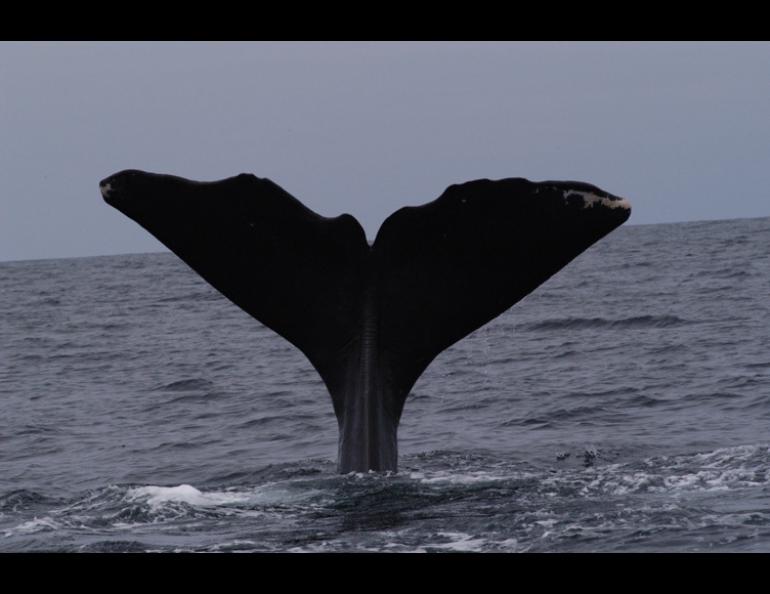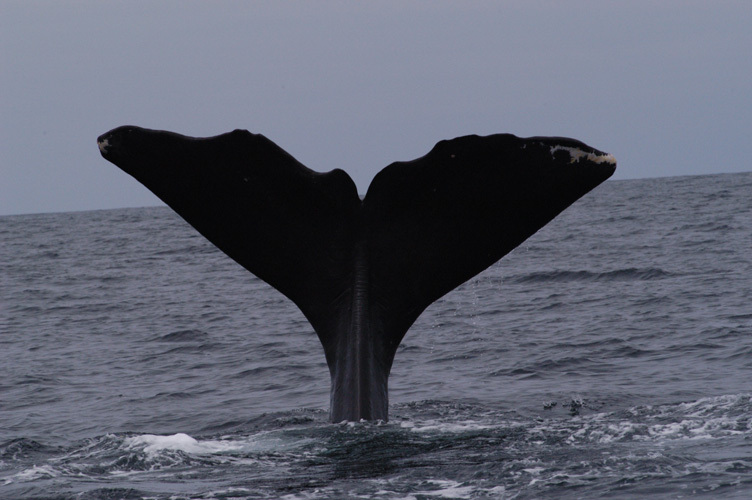
Searching for a solution to fish-snatching whales
In his decades of fishing in Southeast Alaska, Sitka fisherman Dennis Hicks has lost a good number of fish to giant thieves—sperm whales that pluck black cod off his longline hooks.
“We’ll set our gear and drift overnight and when we come back sometimes they’ll be at our buoy, waiting for us,” Hicks said from Sitka, where he fishes with the 46-foot EH. “(The whales) will be milling around, but when you start hauling, they’ll dive. Some fish come up munched, and some hooks are straightened out.”
While sperm whales are the longline-robbing experts of Southeast, in the Bering Sea, killer whales have gone to extremes while stripping longlines, sometimes hitting nine out of ten fish. In two research projects, scientists are trying to determine what is attracting whales to fishing boats and what they might do to block it.
Jan Straley is a biologist at the University of Alaska Southeast who has been working with Hicks and nine other fishermen on sperm whale encounters with longliners. Longlining is a fishing method in which fishermen drop a line with thousands of baited hooks and retrieve it in hours or after letting it sit overnight. The method is an effective way to catch oil-rich bottomfish, such as black cod, also known as sablefish.
From a biological perspective, pulling fish from a longline might spare the whales the energy required to dive 2,000 feet for a black cod, Straley said. Despite blocky heads and a small mouth, sperm whales are talented at stripping hooks.
“They’re good at it,” Straley said. “They can take a black cod sandwiched between two rockfish.”
In a study funded by the North Pacific Research Board and supported by the Alaska Department of Fish and Game, the Alaska Longline Fishermen’s Association and Scripps Institute of Oceanography, Straley and her colleagues are using 10 Southeast fishing boats to gather information about the whales, dropping hydrophones with the longlines to capture underwater sounds. They take DNA samples from whales with a crossbow system to find the sex and population affiliation of each whale (the sperm whales sampled thus far have been males), and they are also gathering whale photographs, often taken by fishermen, to see if the same whales are hitting fishermen’s sets in a different location.
Far to the northwest in the Bering Sea, killer whales have become skilled at stripping longlines of black cod and turbot. Black cod and turbot live much deeper than killer whales can dive, so their only taste comes at the expense of fishermen.
“Some killer whales have learned to bite the back of the fish, leaving only the heads,” said Alex Kulinchenko of Scientific Fisheries Systems (SciFish) of Anchorage.
For a project sponsored by the Alaska Fisheries Development Foundation, Kulinchenko developed a system of acoustic monitors that he installed on the Prowler, a ship out of Petersburg that operates in the Bering Sea. In late June and early July 2004, another SciFish employee collected acoustic data from recording devices attached to the ship and the longline to see what sounds generated by the ship might attract killer whales. One possibility is a low-frequency hum emitted by the longline as the boat is hauling it up.
Both Straley and Kulinchenko hope their research will result in a scientific solution to replace other methods of deterring whales that haven’t worked so well, including the use of decoy boats and fishing at night. A possibility is some underwater noise generator that would scramble whatever signal causes whales to gather.
“We’re wondering if there is some acoustic measure that would discourage them from becoming the marine equivalent of a dumpster bear,” said Marc Jones, former director of the Alaska Fisheries Development Foundation, the sponsor of Kulinchenko’s study.





